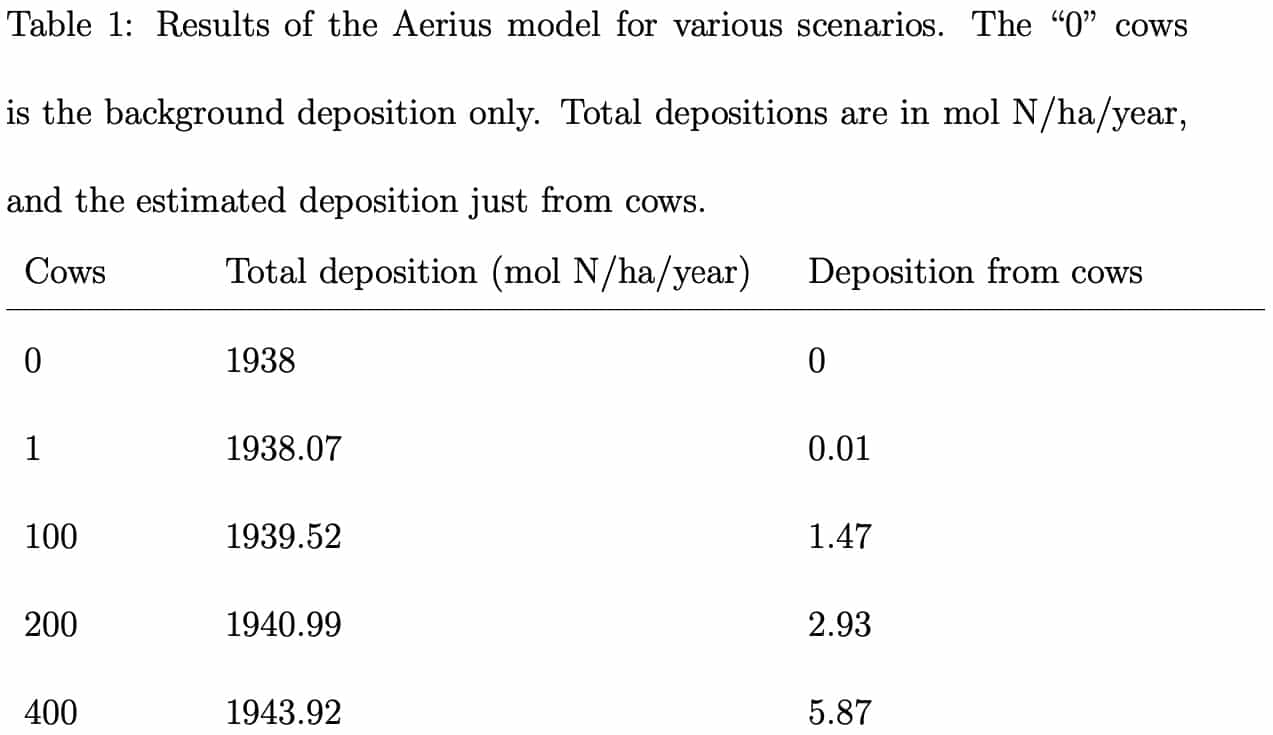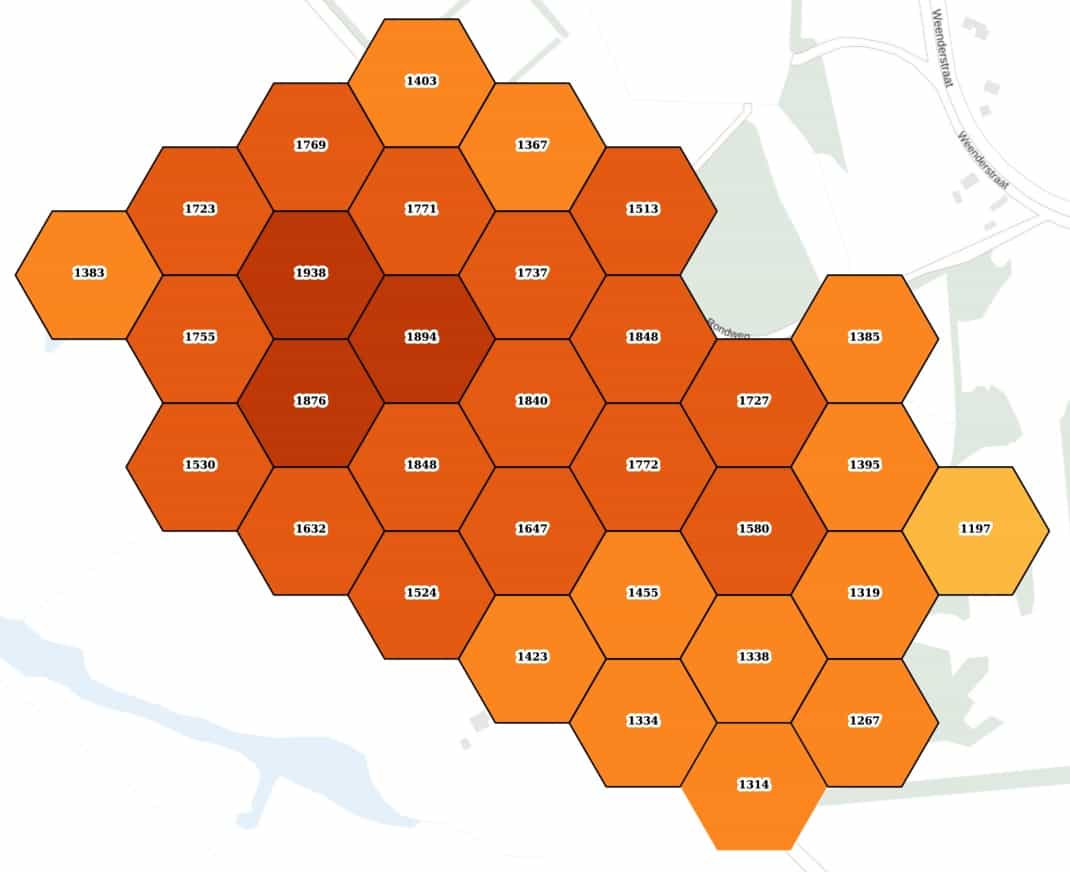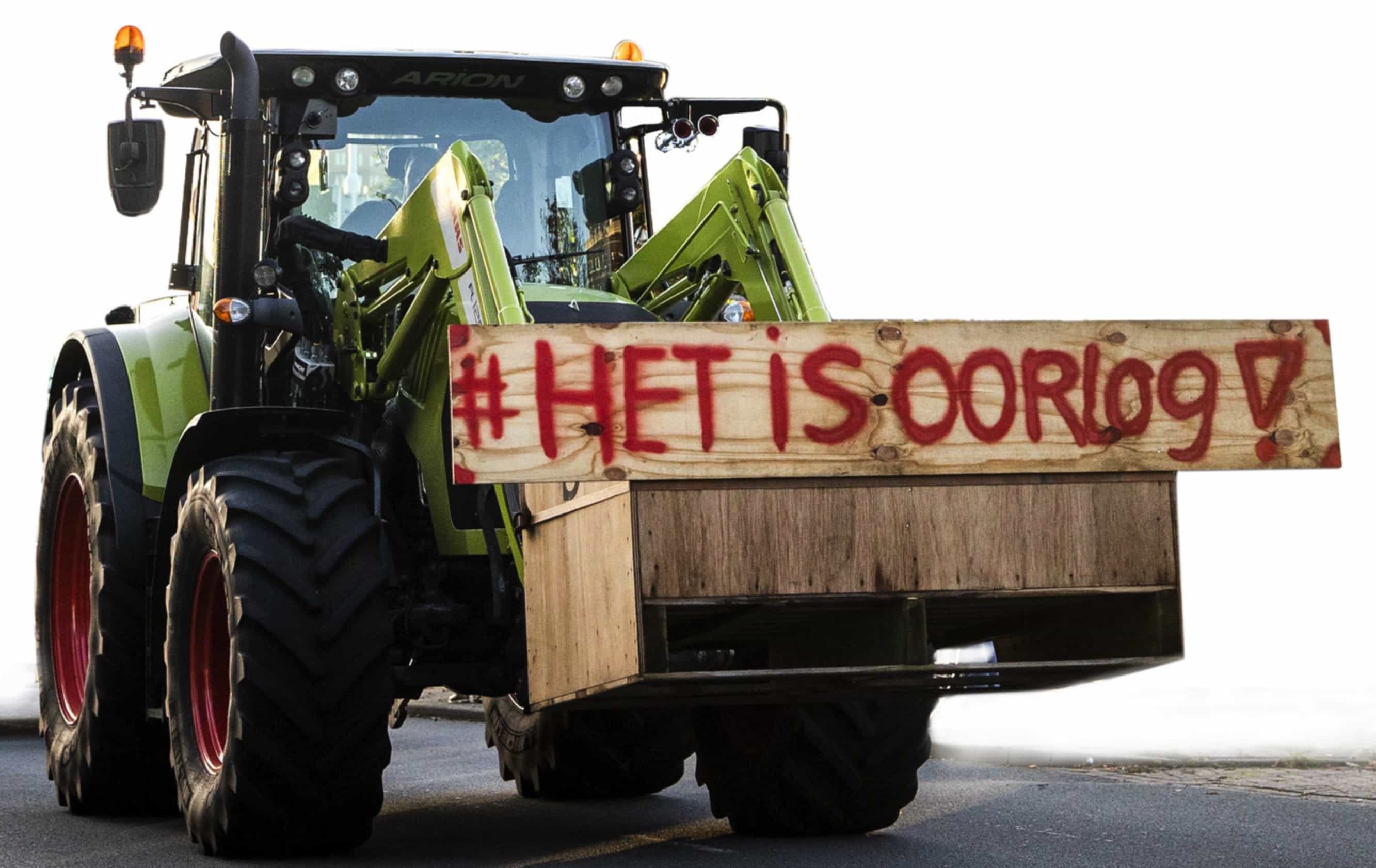Introduction
The Dutch ‘nitrogen crisis’ revolves around the misconception that the quality of nature is predominantly determined by N-deposition coming from agriculture. That is to say: N-deposition is regarded as a ‘nature quality-thermostat’ which can be positively regulated by forcefully shrinking Dutch agriculture.
It is clear that the Dutch government embraces a disastrous expertocracy to try to control national agriculture top-down via nitrogen(compounds) and its ostensibly apocalyptic consequences on nature.
Current agriculture is ‘bad’, according to the extirpative expertocracy. This applies to nitrogen but also to carbon-dioxide, which now needs to be taxed as to ‘nudge’ people away from animal products such as meat, milk and cheese.
We will see whether the Dutch population buys into the nitrogen delusion - the upcoming province elections that will impact national politics as well, will be an indicator.
Nevertheless, the Dutch nitrogen delusion seriously undermines the most basic of human endeavours - the production of food - and stands as a stark warning to the rest of the (agricultural) world.
The delusion in two acts - AERIUS and Nitrogen Critical Loads
The Dutch nitrogen ‘crisis’ boils down to two ‘acts’: a model that simulates nitrogen (N) deposition ánd a standard that ostensibly defines N-deposition limits beyond which damage to nature cannot be excluded. The model is AERIUS and the standard is the Nitrogen Critical Load (NCL). Combined, these two have created the ‘crisis’ as we now know it in the Netherlands.
As we will see, this crisis is wholly artificial. We should call it the Dutch nitrogen delusion.
Nevertheless, it is advertised by the expertocracy, politicians and the media as a genuine emergency we have to solve at great financial, economic, social and personal cost. By the way: these massive expenditures are devoid of any cost-benefit analyses (see further below)!
To understand the delusion, we have to understand what NCL are ánd how well AERIUS works (if at all). Let’s start with the model, as it plays a central role in the Dutch nitrogen delusion.
AERIUS (OPS) - misadventures in modelling
The National Institute for Public Health and the Environment (RIVM) develops and manages the calculating tools - AERIUS - that are used to model the emission and deposition of nitrogen on Natura2000 sites. The Operational Priority Substances model (OPS) is the mathematical heart of AERIUS and was introduced in 1989.
OPS is presented as a model that simulates the atmospheric process sequence of emission, dispersion, transport, chemical conversion and deposition. The model is set up as a universal framework supporting the modelling of a wide variety of pollutants, and one of its main purposes is to calculate the deposition of acidifying compounds over the Netherlands at a high spatial resolution.
The billion-dollar question is: what kind of accuracy is delivered by OPS?
This is an important question as, by and large, two things are done with OPS that are of interest here: it purportedly calculates a yearly background N-deposition from all (national and international) sources and it calulates the N-deposition contribution of a specific activity (source) - say a farm that plans to change its cattle-numbers - to the background.
It should be noted that OPS, in AERIUS, does nót model deposition as such but makes estimations of sorts that contains some kind of uncertainty. Modelling is not problematical per se, as measuring dry N-deposition (as in N-deposition not found in precipitation) is not done succesfully anywhere.
By RIVM’s own admission, uncertainties with respect to nationally distributed ecosystems is estimated at 25 - 30% for NOy and NHx, respectively. For specific ecosystems (500 x 500m to 5000 x 5000m) uncertainties are higher: 60 - 100% for NOy and NHx deposition, respectively.
However, things prove to be much worse for OPS.
The 2019-2020 Scientific Advisory Committee on Nitrogen, of which yours truly was a member, already noted that AERIUS cannot model N-deposition related to specific activities (farms) with any kind of satisfactory precision as to provide or extend environmental licenses to that activity.
This crystal-clear verdict is rarely mentioned anywhere and still is not taken on board within regulation!
Additionally, in March 2022 the OPS-validation studies were made public after a FOIA-request. These studies, surprisingly, were not made available to the Scientific Advisory Committee on Nitrogen!
Friend and colleague Matt Briggs analysed these validation studies extensively, which showed OPS to be garbage. Our findings are summarised in Criticizing AERIUS/OPS Model Performance and our Rebuttal On RIVM’s Critique Of Briggs et al. AERIUS/OPS Model Performance.
The latter was published after the RIVM delivered the underlying data of the validation-studies ánd published a ‘rebuttal’ of sorts to our first analysis. The following are our main conclusions:
- The genuine validation studies concede the model performs poorly;
- AERIUS/OPS often cannot outperform a simple “mean” model; that is, a simple model beats AERIUS/OPS’s predictions. AERIUS/OPS thus has no skill and should therefore be jettisoned;
- The verification measures used in previous studies are substandard and incomplete, resulting in actual poor performance seen cosmetically as adequate;
- Uncertainty is poorly addressed within OPS simulations;
- Calculating straightforward scenarios on AERIUS produces results which are trivial ánd not measurable. For instance, reducing a farm’s cattle by 50% decreased nitrogen deposition by 0.1%, an “event” well within the margin of measurement and modeling errors;

- Given its many failures, lack of skill, and general poor performance, AERIUS/OPS should not be used for any decision making. A full verification, and improvements flowing from those verifications, are needed before the model can be trusted.
It is clear that OPS within AERIUS should not be operational in the first place. It proved to be without skill from its inception. It is incapable to simulate N-deposition with any meaningful precision.
Be that as it may: AERIUS is still in use to this very day and produces ‘shiny’ and meaningless pictures such as below on which far-ranging regulatory decisions are being made:

The solution to all these and other issues is to design experiments and independently (separately from the RIVM!) test OPS on completely new data. Pending those experiments, OPS must be shelved as to forestall extensive societal and economic damages resulting from its continued use in policy making.
Two interesting things happened recently with respect to this model: a court case against the Dutch State has been initiated to put AERIUS on hold, and a parliamentary member - Pieter Omtzigt - has asked the Dutch government to legally analyse AERIUS' fit-for purpose.
Nitrogen Critical Loads (NCL) - fabricated ecological exactitude
The critical loads form the standards to which N-deposition, as (poorly!) modelled by AERIUS, is benchmarked. How should we understand NCl ecologically? Let’s have a look.
A critical load (CL) is an official level of exposure to a substance above which environmental harm is said is likely to occur. These loads are mostly presented as atmospheric deposition rates of kilograms per hectare per year. The focus is on nitrogen (N) compounds and thus NCL are on the table here. The 1988-report Critical Loads for Sulphur and Nitrogen define CL as such:
“A quantitative estimate of an exposure to one or more pollutants below which significant harmful effects on specified sensitive elements of the environment do not occur according to present knowledge.”
This 1988 CL-definition is referred to as more or less canonical. Just the same, CL-definitions are general in scope and need at least some specification with respect to endpoints and ecologies (types of ecosystems).
The former are mostly described as eutrophication, acidification, and pressures on biodiversity (species richness). The latter refers to all sorts of habitats such as marine habitats (EUNIS class A), coastal habitats (EUNIS class B), inland surface water habitats (EUNIS class C), and so on. EUNIS stands for European Nature Information System.
Inexplicably, in the Netherlands, NCL are presented as “unique singular values”, used to ostensibly determine deterioration of ecosystems once N-deposition, as simulated by AERIUS(!), exceeds these singular values. As recently stated in this 2022-report (p. 326; emphasis added):
“These critical loads for N deposition … are the given standard in The Netherlands, and are also accepted by the government and by the judges of the highest administrative court. And because these critical loads have unique values instead of ranges, it is clear whether or not the critical load of a specific habitat is exceeded.”
Scientifically, it is irrelevant whether or not NCL are accepted by governments and/or legal bodies. These endorsements cannot and do not bolster ecological claims made with NCL and the professed ecological consequences if exceeded.
In fact, those establishing NCL seem to have a need to revert tot the fallacy of the appeal to authority to underpin their work.
In a paper published last year, friend and colleague Matt Briggs and yours truly tallied the many deficiencies in some paradigmatical papers on NCL. For one, critical loads definitions are unclear with respect to repeatable or consistent measures on plant measurements or chemistry, for instance (emphasis added):
“Whatever critical load is, it cannot change from one thing to another; change in measure, that is. Change in itself is neither good nor bad. That the different studies that showed, for instance, how the length of a particular Sphagnum species is changed on average in some way is not, by itself, of interest. It must be specified why some level of growth, if only growth is considered, is good or bad in some decisional manner.”
This is only the beginning of the NCL-woes we found in the assessed NCL-papers. Uncertainty and the ways in which it is nót addressed in the CL-discourse proved to be a most worrisome topic. The widespread misunderstanding of statistics in the ecological community - friend Briggs can explain all about the significance fallacy - only makes things worse.
Unrecognised factors of uncertainty in NCL bring us back tot the ostensible “unique values” for NCL. This is nothing other than pseudoscience. The ecological precision suggested in these “unique value-NCL” is bogus and conjured out of thin air.
Ruining society with faux science
The powers-that-be in the Netherlands thus have chosen a ‘unique’ approach to its agricultural community and thereby the rest of the population. It has chosen to forcefully curtail its centuries old capacity to deliver quality food-products to the Dutch and European markets for purely chimerical ecological reasons, even without any proper cost-benefit analysis.
That is foolish and dangerous for numerous reasons. I will address five.
Firstly, all peoples in world history tried to take care of their own food production. The story of Jozef in Egypt as found in Genesis 41 and onward is but one and very ancient example. It is irrelevant whether this story is historical to some degree or not. What matters here for my purposes is that food production (and proper storage) always had tremendous and recognised strategical value! Nothing has changed since ancient times.
Ignoring the strategic value of national food production is uniquely stupid and courts disaster.
Secondly, expertocracy is no substitute for good farming. Science can be a great help in improving farming, and the Netherlands is a fantastic example in this. However, the bloated expertocracy we observe in the nitrogen delusion will harm the Dutch agricultural sector and the Dutch population, while the expertocracy remains out of harms way.
A classic example of expertocracy having no skin in the game. Obviously.
Thirdly, scientific knowledge by itself, even of the highest quality, is never (really: as in never) enough reason for any kind of decision. Scientific knowledge is but one aspect amongst many others. Social, economic, cultural, religious, historical, strategic aspects of the issue at hand have to be brought to the table in order to make any kind of well-informed decision.

A simple example will suffice: is it the case that me scientifically fully understanding ‘the model die’ (the probability to throw a 6 with one die is 1/6), I therefore must place a bet in some game that uses this ‘model’?
Of course not!
Many other aspects influence the making of that choice. I might be very much against betting because of my religious beliefs, or I simply do not want to put my money on the line for some futile game, or I have no trust in my ability to properly throw a die (for whatever reason), and so on.
Fourthly, the ‘science’ that is used in the Dutch nitrogen delusion is of the worst kind. Reiterating, both NCL and AERIUS simulations are presented with nonexistent numerical precision that deliver no proper insights into the quality of nature. Sure, uncertainty is discussed within the nitrogen discourse, yet it has no bearing on the actual use of both whatsoever.
Fifthly, even if we grant that ‘the science’ is clearcut, and we do not(!), the Dutch nitrogen delusion lacks any kind of broad societal benefit-cost analysis. Worse, with all the money poured into this delusion, there is no assessment forthcoming whether nature will profit at all by curtailing Dutch agriculture.
In fact, all that is being said on the benefits to nature by decreasing N-deposition via the reduction of agricultural activities reverts back to the pseudoscientific “unique value NCL” and shoddy AERIUS simulations.
This is nothing other than circular reasoning!
Small wonder that this House of Parliament motion on benefit-cost analyses related to nature protection and N-deposition was never executed. The regulators and their expertocracy know they stand empty handed!
The conclusion is inevitable: the Dutch nitrogen delusion is prototypical dystopian resulting from a blatant scientistic, authoritarian and thus utopian demand for a ‘reconstructed agriculture’ (see my second dissertation Utopia and Gospel).
This non-existent ‘new and improved agriculture’ is deus ex machina ‘much better’ than the present one. This nirvana-argument is presented, obviously, without so much as a shred of evidence. And that makes the involved expertocracy nothing other than magicians, fabricating a future world that is knowingly incoherent.
